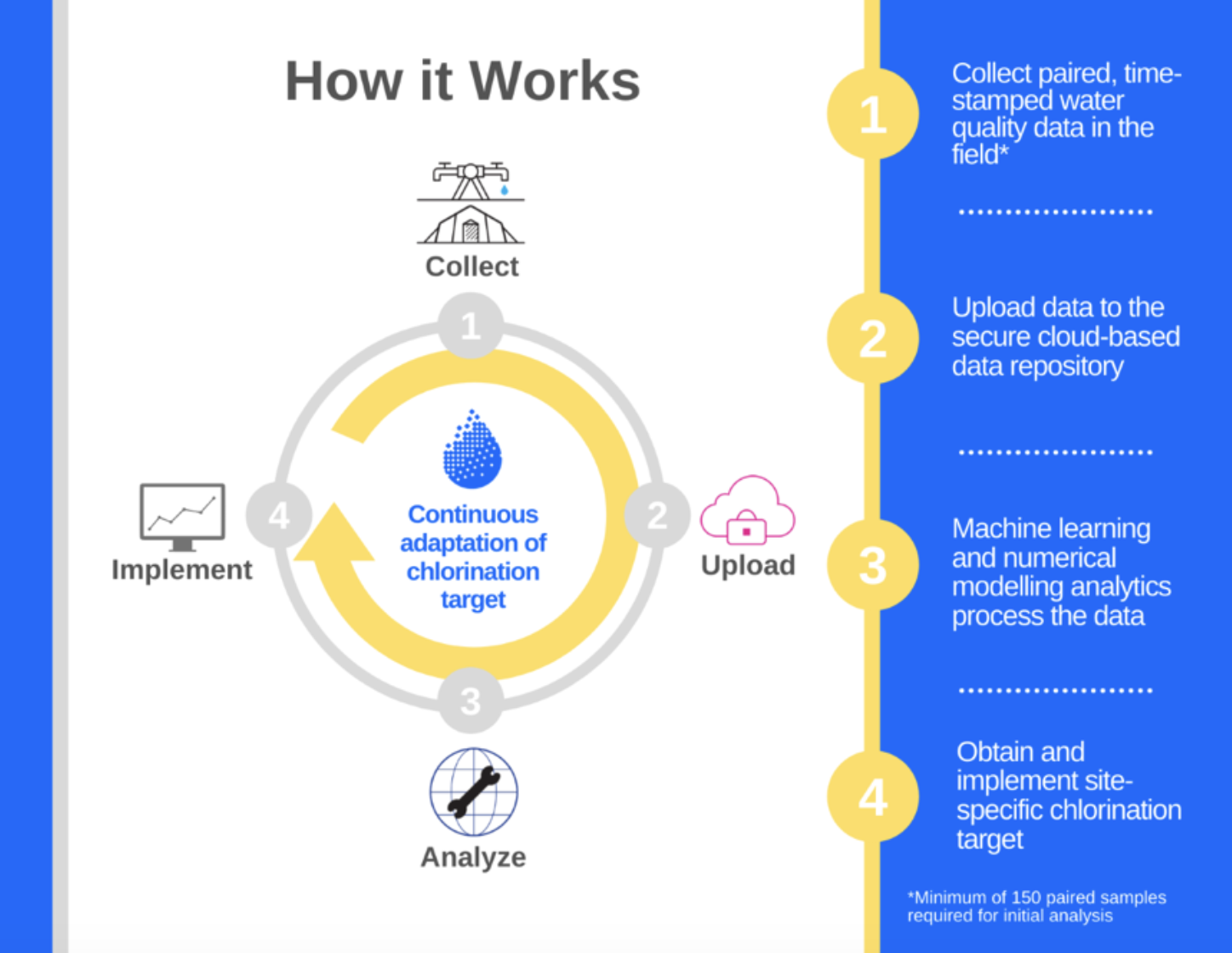Innovative new data analytics technology to help improve access to safe water in refugee camps
York University's Dahdaleh Institute for Global Health Research launches first of its kind web-based tool
TORONTO, November 5, 2020 – A new web-based tool will help aid workers ensure that water is safe to drink in refugee and internally displaced persons (IDP) camps. Researchers at York University’s Dahdaleh Institute for Global Health Research, in partnership with Médecins sans Frontières (MSF/Doctors Without Borders), launched the Safe Water Optimization Tool (SWOT) today, the first concrete application of artificial intelligence for improving safe water supply in humanitarian operations.
The tool builds on more than five years of water safety research carried out in refugee camps in South Sudan, Jordan, Rwanda, Tanzania, and Bangladesh. Researchers from York University’s Lassonde School of Engineering, Department of Mathematics and Statistics, and School of Global Health all collaborated on the tool.
The SWOT deploys machine learning and numerical modelling techniques to analyze water quality monitoring data that is routinely collected in refugee and IDP camps, in order to generate water chlorination targets that are both site-specific and evidence-based. Using water quality data from public water distribution points and from people’s shelters, the models show how rapidly chlorine decays under local site conditions. Site-specific chlorination targets ensure the water has sufficient residual chlorine to protect water from being re-contaminated by waterborne pathogens for the entire duration of household storage and use in camp settings. By ensuring safe water at the point of consumption, the SWOT helps protect public health during humanitarian emergencies.
Chlorination is the most widely used method of water treatment in humanitarian operations because of its ease-of-use, low cost, and importantly, the residual protection it provides against pathogenic recontamination. Because of its widespread use, humanitarian organizations relied on a single universal guideline on how to chlorinate water during emergencies.
“The universal guideline doesn’t always work because its not based on any actual evidence from humanitarian field settings,” says Syed Imran Ali, founder and lead, SWOT. “What this tool does is it enables us to use the local data to figure how we need to treat the water so it safe in those local conditions. It's a complete game-changer in that respect. We’re getting site-specific, evidence-based recommendations for water treatment rather than a universal guideline based on no field evidence.”
Waterborne diseases such as cholera, dysentery and hepatitis E are some of the leading threats facing displaced populations and are among the leading causes of preventable death in refugee camps. The research that would eventually lead to the SWOT began during a major Hepatitis E outbreak in refugee camps in South Sudan in 2013, where Ali worked as a Water and Sanitation Specialist with MSF.
Humanitarian teams routinely collect free residual chlorine (FRC) at public water distribution points and shelters in refugee camps. The data is then uploaded to the SWOT website and users receive an email report telling them how much to chlorinate the water at the point of distribution. This information, researchers say, is key to ensure the water at that site remains safe for the entire duration of time that people store and use water in their shelters.
“We have a lot of evidence that re-contamination of water can occur in tents at the camps and that’s where we can see the spread of waterborne diseases,” says Ali. “By improving the safe water chain to people’s households, we can improve their public health in these camps.”
Researchers say at a time when countries are fighting a world-wide pandemic like COVID-19, tools like this can prevent further healthcare crises.
“One of the key and often forgotten and most effective interventions in terms of reducing the risk of spread of COVID, is water, sanitation, and hygiene,” says James Orbinski, SWOT advisor, professor and the inaugural Director of York University’s Dahdaleh Institute for Global Health Research. “In the North, we talk about personal protective equipment and hand washing. We assume that the water itself isn't contaminated and we're using water to remove contaminants from our hands. In situations like refugee camps and internally displaced persons settings, if you're asking people to use water that itself is contaminated you could be spreading, through that contaminated water, infectious diseases. So what this tool does is it provides a very clear approach to maximizing or optimizing safe water.”
The tool is currently being used in camps in Nigeria, Bangladesh, and Tanzania.
“York University is absolutely the right home for this tool as York is not only conceptually, but very practically, committed to both equity and to transdisciplinary approaches to new knowledge,” says Orbinski.
York University champions new ways of thinking that drive teaching and research excellence. Our students receive the education they need to create big ideas that make an impact on the world. Meaningful and sometimes unexpected careers result from cross-disciplinary programming, innovative course design and diverse experiential learning opportunities. York students and graduates push limits, achieve goals and find solutions to the world’s most pressing social challenges, empowered by a strong community that opens minds. York U is an internationally recognized research university – our 11 faculties and 25 research centres have partnerships with 200+ leading universities worldwide. Located in Toronto, York is the third largest university in Canada, with a strong community of 53,000 students, 7,000 faculty and administrative staff, and more than 300,000 alumni.
Media contact: Anjum Nayyar, York University Media Relations, cell 437-242-1547, anayyar@yorku.ca







